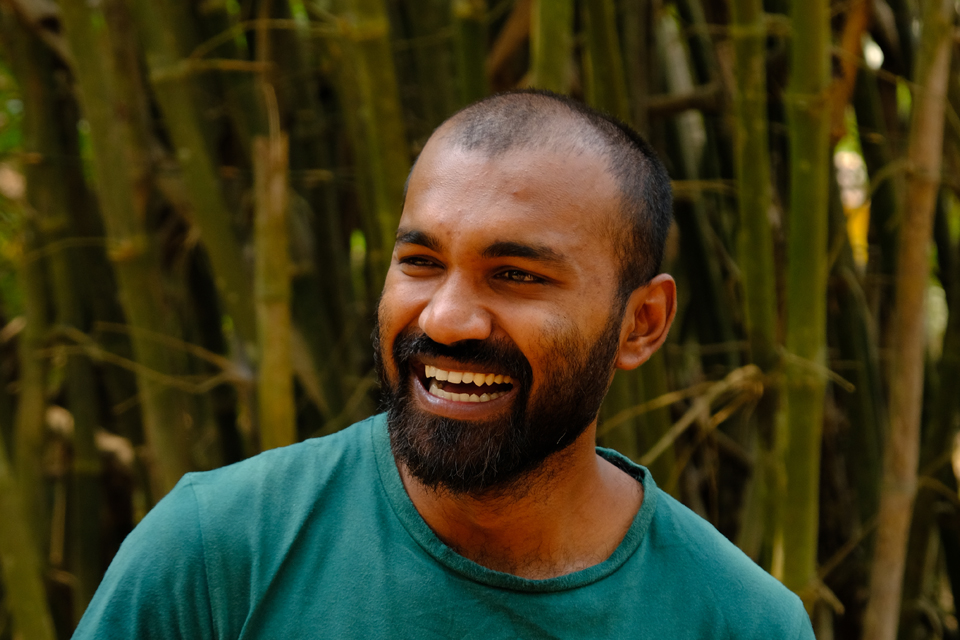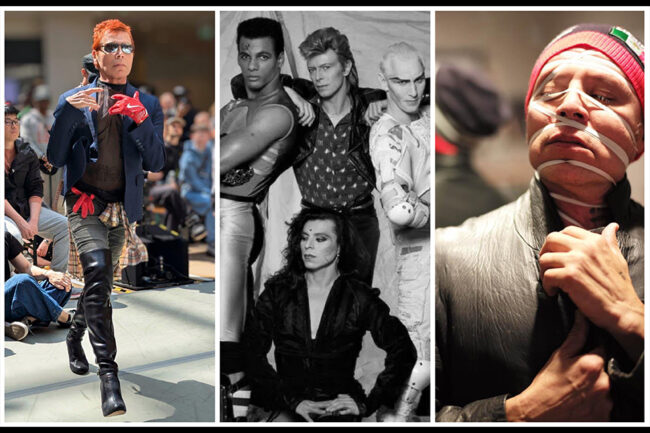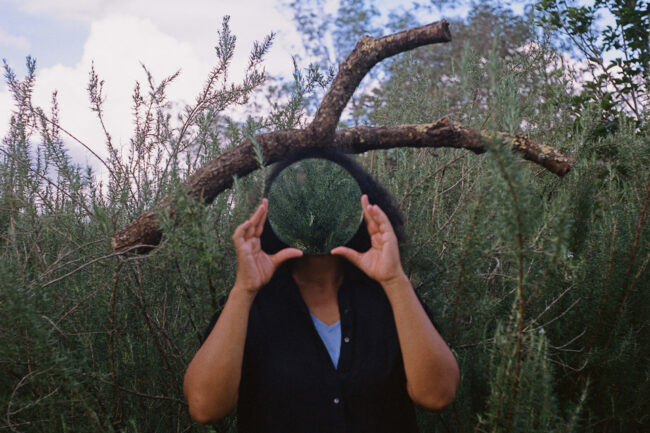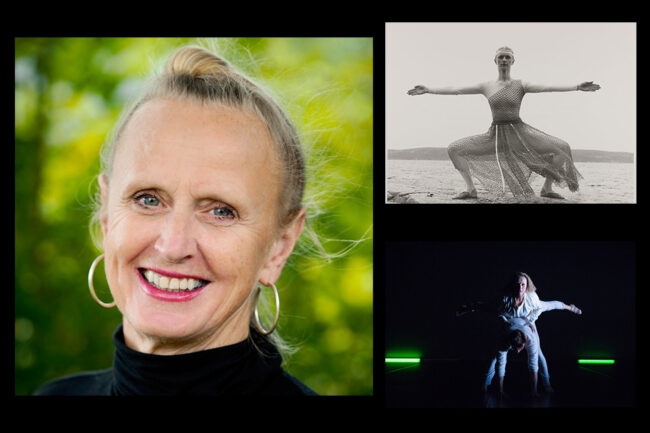Purnendra Kumar Meshram is interviewed by llse Ghekiere, on behalf of Dance Information Norway.
Maybe this is a bit of a vague question to start with, but how would you situate yourself as a dancer today?
Recently, I have been thinking a lot about what it means to be an artist and if I belong to that category or not. I see myself more as a researcher in dance. Within that framework I take up the role of the dance educator, the choreographer or the dancer. If I want to see myself as an artist, I feel – and I am saying this in all honesty – that I still have a long way to go.
One of the core elements of my dance practice is teaching. When I teach dance I always depart from the question: How can we be more authentic to ourselves? This question comes from growing up in rural India and how I have always been told what I need to do. The trajectory is already there: become a doctor, a lawyer or anything that would advance you in society. And so I studied commerce, because I was just following. Speaking up or raising my voice saying: ‘I don’t want to do this’, didn’t seem to be an option. When I began dancing, this entirely changed for me. Dance became a place where I no longer needed to wear an artificial mask. It was a place where I could be more authentic. Dance became my voice, my language. It’s because of dance that I speak here to you today.
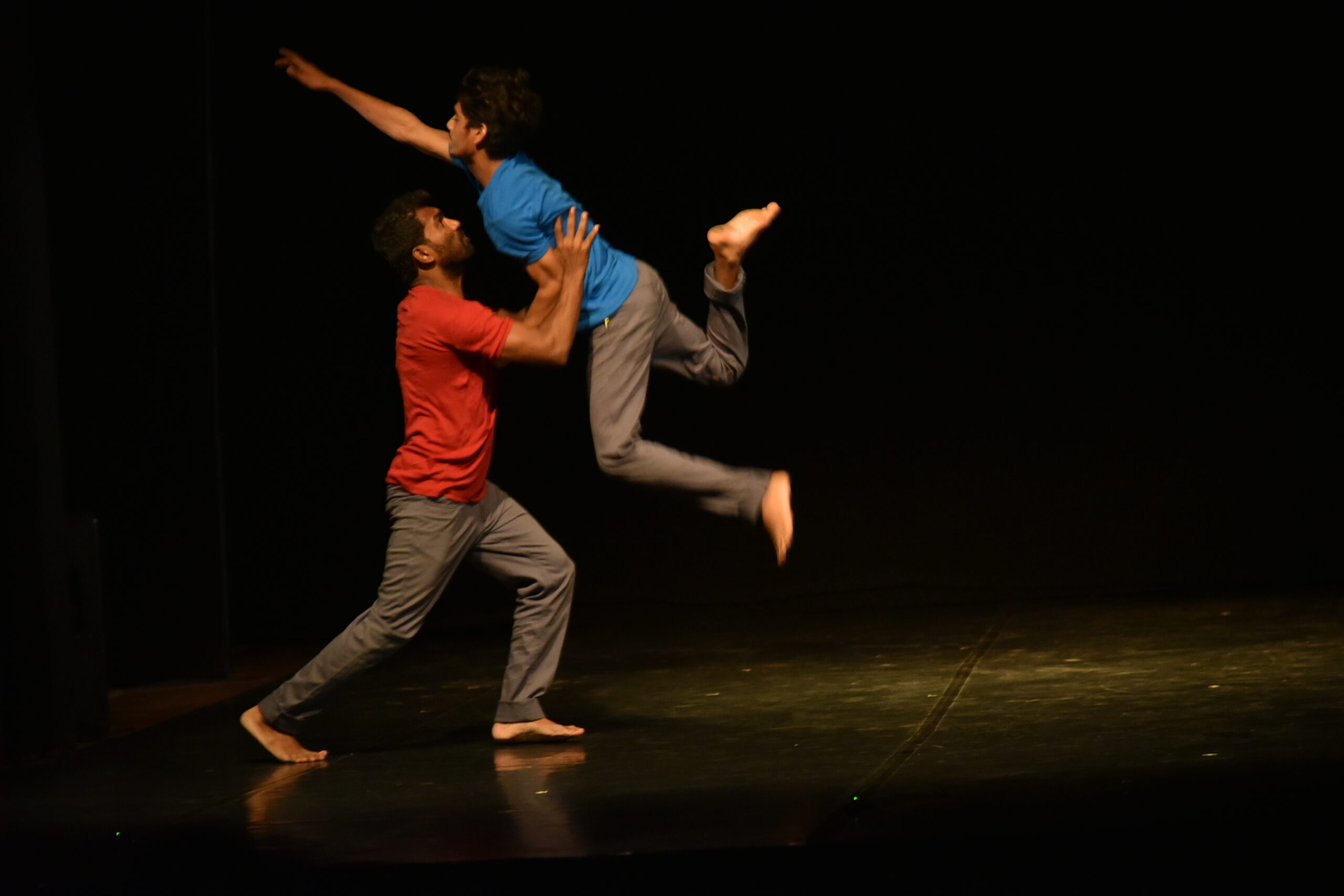
Can you tell me a little more about how you got into dancing?
As a child, I would watch a lot of Bollywood on the TV and was fascinated by the dancing. After I graduated with a bachelor in commerce in 2011, I started taking a lot of Bollywood dance classes, which led me to doing auditions for reality shows. Through this I met many people in the field of dance and one of them was a dancer who invited me to make a choreography together. I left my home town, Chhattisgarh for about six months without telling anyone what I was planning to do. When we participated in a dance competition, we won. It was around that time that I also met someone who had graduated as an engineer and was studying contemporary dance in Bangalore. It was the first time I heard about the dance program at Attakkalari (Centre For Movement Arts). So I went back to my hometown and asked my parents if they wanted to support me. They were skeptical at first, but I said: I will only be one year, and they agreed. I graduated and here I am, 10 years later!
You grew up in Chhattisgarh, studied in Bangalore and a couple of years ago moved to Goa. Can you tell us something about the dance communities in the places you have been living?
If we talk about contemporary dance, Bangalore is definitely the place to be these days. There is a dance education and some funding bodies, though nothing compared to what exists in Norway. Goa on the other hand, is a place where lots of things are happening all the time. There is a culture of sharing and learning and not unimportantly it is close to nature, a place where many dancers practice their art. Because I teach a lot, I have established a community of people I work with. There is also Contact Dance Community India who offers classes and jams, which is something I love. It is a place where you can explore without limits and no one comes to question us. There is a café called Jungle Dance where we teach and show our work, but it’s very DIY. While Banglore has a more established professional dance community with professional studios (which are expensive to rent) and dance jobs, Goa offers a more experimental and cross-disciplinary scene.

You have worked in the European context before, can you tell us a bit more about that?
In 2018, I made my first performance called 2 Men with my colleague Pradeep Gupta . It is a simple, almost ‘raw’ duo. There is no music and the only thing you hear is our breathing and the sound of our steps. Everything is very concentrated, like a dense conversation in movement. With 2 Men we participated in PECDA (Prakriti Excellence in Contemporary dance) in Chennai (India) and won a prize. A year later, I applied for a choreographic competition in the Festival 10 Sentidos in Valencia, so I could present the work outside of India. They accepted us, but there was no funding. Some people who believed in me pulled some strings and I got support through the Spanish Embassy in New Delhi. Then I still had to find a fund for my colleague, which we collected through crowdfunding. Just to say: it’s a lot of hustle for us to tour internationally! And so we performed in Spain and to our surprise, we also won that competition! After this, I got in contact with Sudesh Adhana and became a replacement in one of the performances he had made in India. I enjoyed his way of working and the questions he asked through his art. It made me want to learn more.
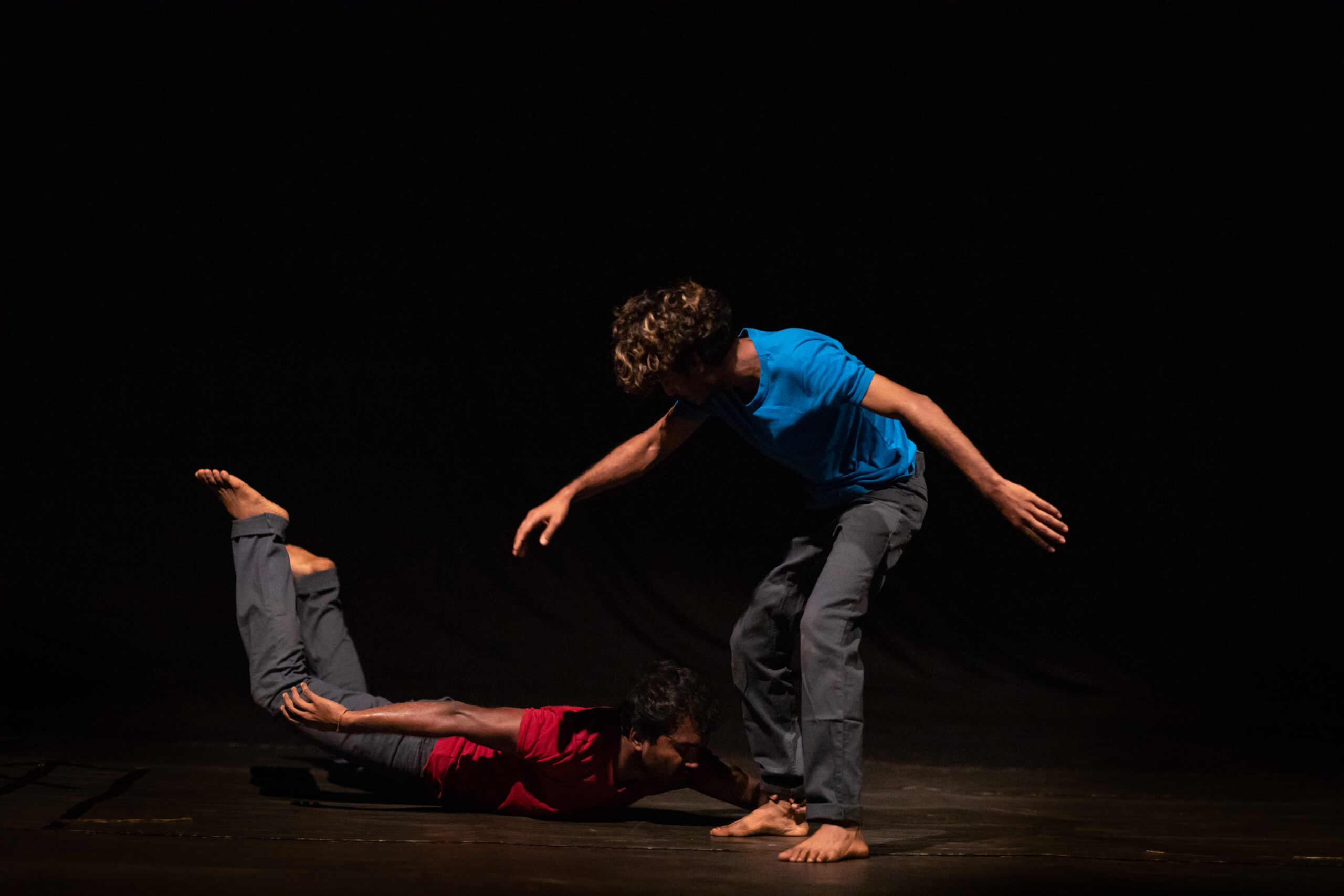
And I guess, this is when the Pina Bausch fellowship comes into your life…
Yes! In Goa I started to feel very comfortable, maybe even too comfortable. I realized that there would be no further growth for me there. From different sides, people recommended me to apply for this fellowship. Part of the fellowship is finding a partnership with a person or organization who you want to learn from. It made me realize that this could be a way to continue my work with Sudesh. I especially want to learn from the ways in which he makes dance explicitly political. Initially, I didn’t think of Two men as a political performance, but because it emphasizes human relations and its constant negotiation, I began to understand that my work and interests have a political message as well. I was a bit intimidated by the writing of the application, but then I contacted the previous fellows and everyone was so helpful. It was a very positive process and in the end I could almost ‘feel’ as if I would get it. And then I got it!
What do you hope to learn and discover through this fellowship and your time in Oslo?
On the one hand, I am attending the rehearsals of a new performance that Sudesh is making together with Nora Svenning. I join the warm-up every day and then I observe the creative process. For example, I am fascinated by how they plan the performance beforehand, following the logic of storyboards used for a film. I never considered working this way! On the other hand, I will also work as a volunteer during the CODA-festival and hope to see many dance performances. I have also met several people from TextLab and I might do a performance or residency there as well. It has been quite an eventful two weeks, so to say! I just hope that I can use this time to learn, explore and reflect on how I would like to continue developing my own work.
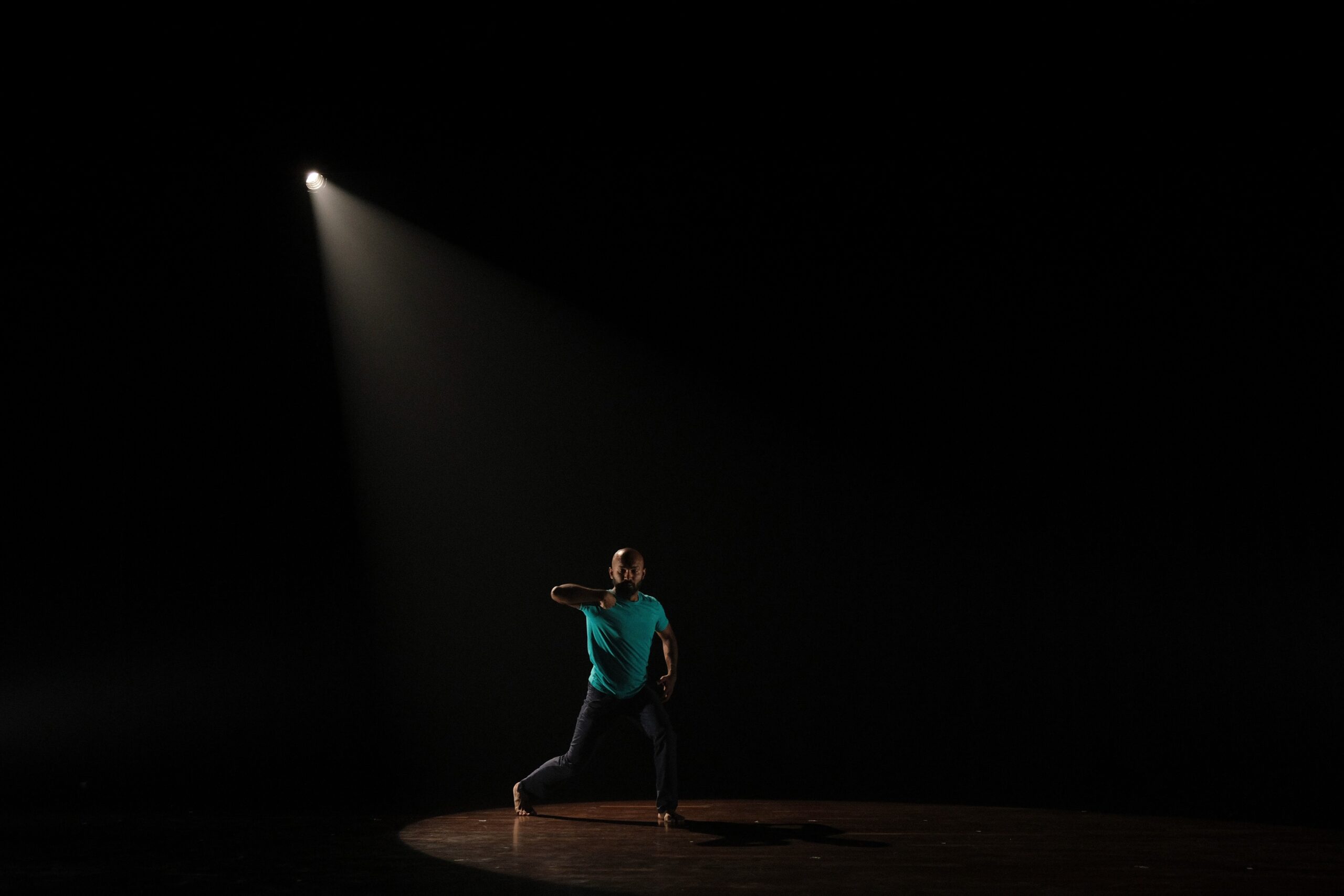
Let’s end with some dreaming… If you envision yourself in 10 years, where do you see yourself in relation to dance?
What I really want is to make the art of dance available to everybody. Somehow, and especially in India, people think that dance is just for dancers, while everything can become dance. Through dance, I learned so much about myself and the world around me. Dance is about awareness and I wish to pass this on to as many people as possible.
Purnendra Meshram is an Indian choreographer, performer, and dance educator. He is currently based in Goa, India. He got his diploma in movement arts in 2013–14 from Attakkalari, Bangalore, India.
His artistic endeavors are driven by a desire to explore the complexities of human relationships and their impact on society, politics, and the country.
Purnendra’s celebrated creations, «2 Men» and «Sweet Spot,» intricately dissect the complexities of interpersonal conflicts. «2 Men,» his acclaimed choreography, clinched top honors at the Festival 10 Sentidos Choreographic Competition in Valencia, Spain, in 2019 and secured second place at the PECDA in Chennai, India, in 2018.
Notably, in 2023, he was given the renowned Pina Bausch Fellowship, which places him in the rich creative atmosphere of Oslo, Norway, under the guidance of Sudesh Adhana. He is also immersing himself in the vibrant Oslo dance scene, always pushing the boundaries of his artistic path.
llse Ghekiere is an artist and art critic who works as a dancer, writer, researcher and lecturer. She studied dance at the Conservatory of Antwerp and has a MA in Art Sciences from The Free University of Brussels. As a dancer she has worked with, among others, Michèle Anne De Mey, Mette Ingvartsen and Jan Martens. Her own work is deeply research based and explores the tensions between sexual liberation and oppression in the arts. In 2018, she founded ENGAGEMENT ARTS, an artists’ movement that tackles sexual harassment, sexism and abuse of power in the Belgian art world. This platform has made her a spokesperson on these issues, ranging from giving lectures and workshops in art education to speaking for the EU-Parliament. Her critical writing has appeared in publications such as Norsk Shakespearetidsskrift, Rekto:Verso and Etcetera Tijdschrift, among others. When she moved to Oslo in 2020, she became a board member of PRAXIS. She is currently part of the project Frå Form Til Famling by the Norwegian choreogapher Solveig Styve Holte.
